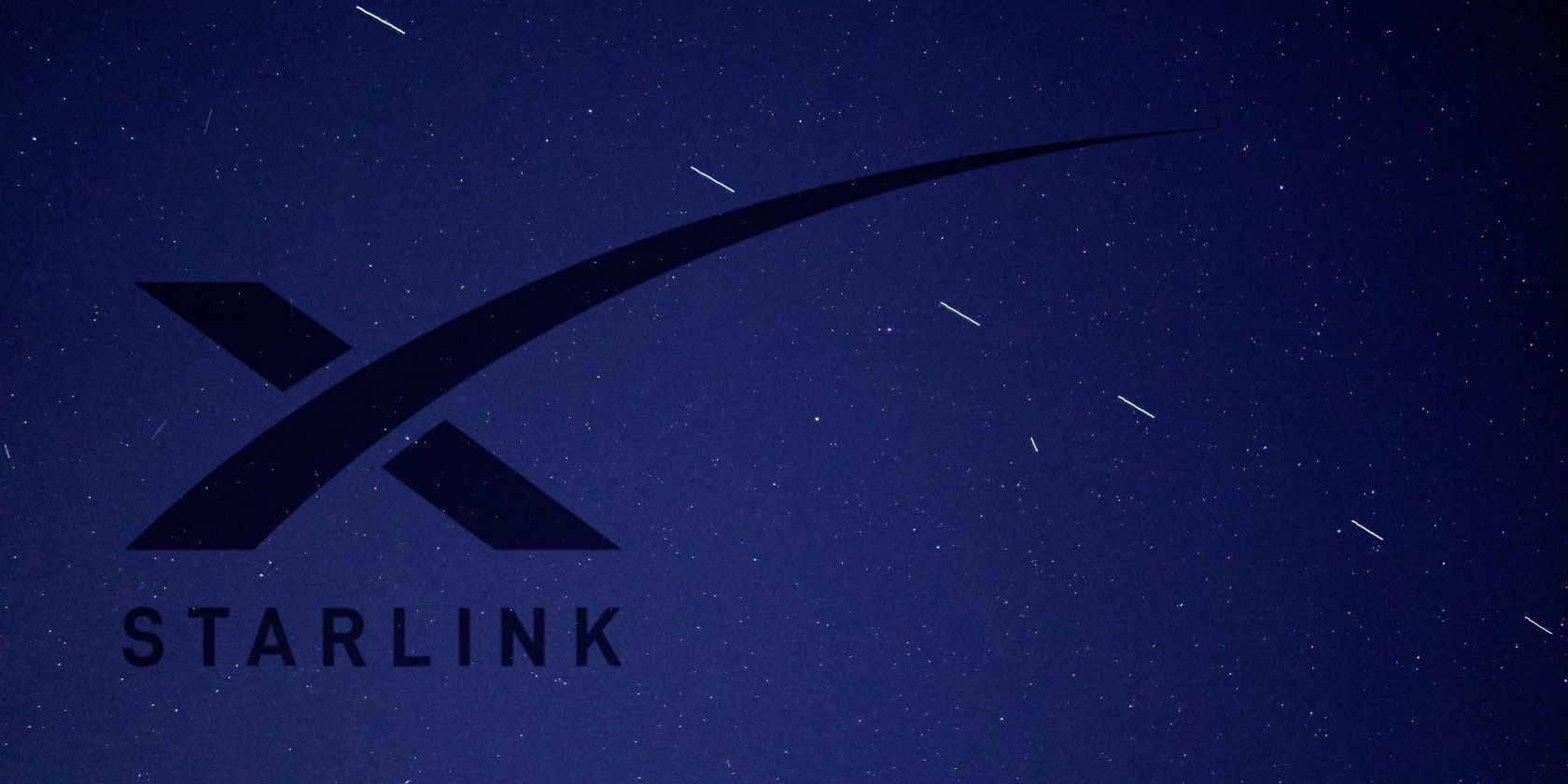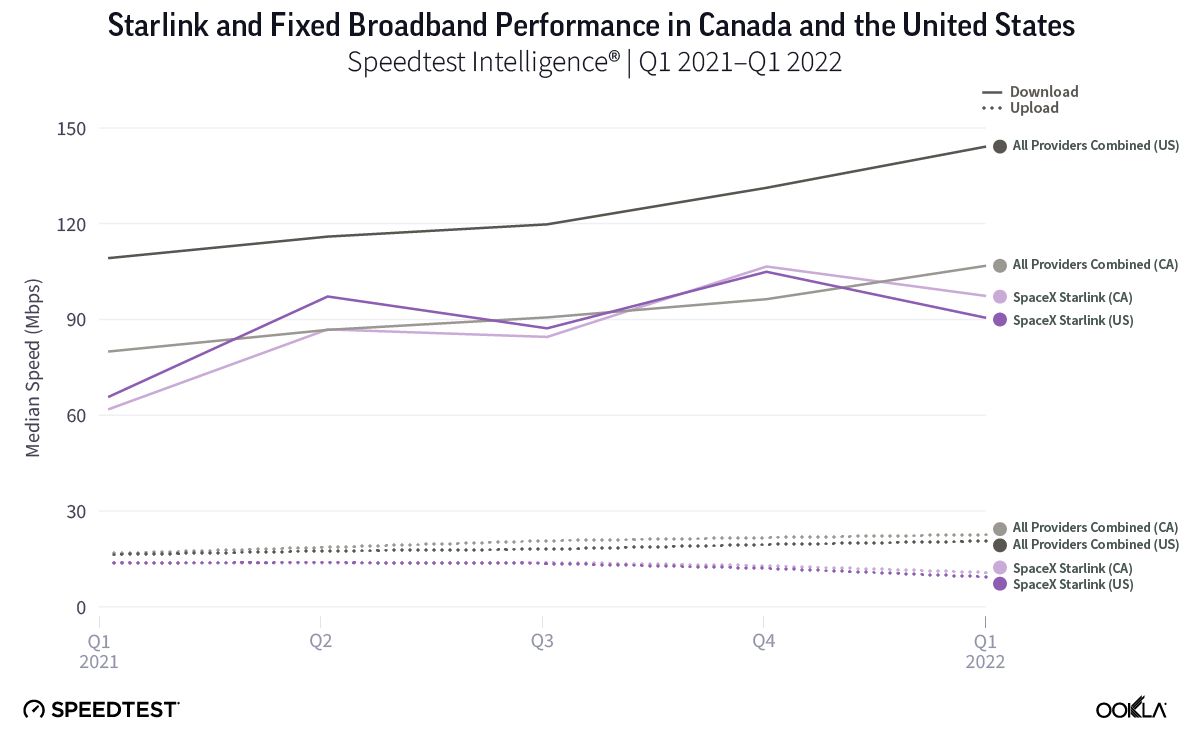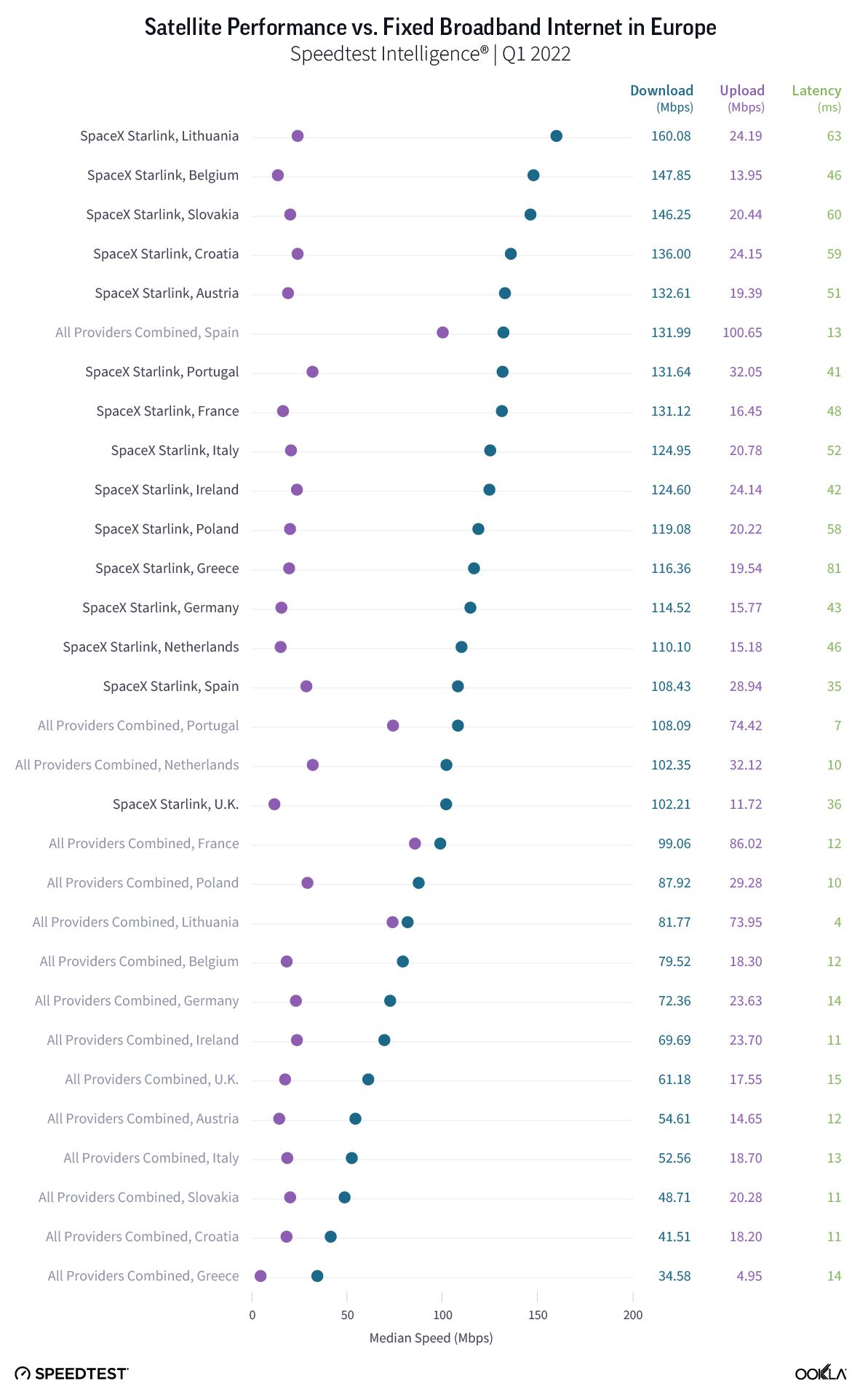If you've looked up at the beautiful night sky at any point since 2020, you may have seen some unexpected new additions to the vista. No, I'm not talking about extraterrestrial visitors. Rather, the introduction of thousands of new low Earth orbit satellites that form part of SpaceX's Starlink project.So, what is Starlink? When will Starlink be available in your area? And how does satellite internet work, anyway?
What Is Starlink?
Starlink is a satellite constellation project that will place thousands of small satellites in low Earth orbit (LEO), 550 kilometers above us. The array will beam internet signals from the satellites down to ground transceivers, which in turn, broadcast locally or wire directly to your Starlink router.
Starlink is not the same as a cellphone signal or 5G. It allows a home, business, or remote location to connect to the internet via satellite.
How Many Starlink Satellites Are in Orbit?
At the time of writing, more than 3,000 Starlink satellites are orbiting the planet. SpaceX plans to deploy at least 12,000 satellites, with plans for up to 30,000 to ensure global internet coverage via Starlink (some figures put the total as high as 42,000).
That figure took a slight dent in February 2022 as a geomagnetic storm took out 38 Starlink satellites shortly after their launch. Of a launch group containing 49 satellites, just 11 survived the event, while the rest reentered the Earth's atmosphere.
How Does Satellite Internet Work?
Satellite internet works similarly to cable internet, except there are a few more moving parts (literally!). Here is a brief summary:
- You head to MakeUseOf to catch up on the latest technology news. Your data request passes from your computer to a satellite internet dish attached to your home (or a nearby location).
- The satellite internet dish broadcasts the data request to a satellite orbiting the Earth. In turn, the satellite sends the request to the ISP.
- Sending your data back reverses the process, transmitting data from the provider to the satellite, then the satellite to the satellite internet dish, down to your router, and onto your computer.
- You arrive at MakeUseOf and begin reading!
That is the basic outline of how satellite internet works.
How Fast Is Starlink Internet?
When Starlink first launched and entered our collective imagination, the company advertised speeds up to 1Gbps when fully functional. However, in 2021, it revised that figure upwards to an ambitious 10Gbps, making the service much faster than most existing gigabit internet services.
Speaking at Satellite 2020, SpaceX CEO Elon Musk said the company is "targeting latency below 20 milliseconds, so somebody could play a fast-response video game at a competitive level," which would be exceptional.
When Starlink first launched in August 2020, its beta program was limited to users throughout high latitude regions of the USA and Canada, such as Seattle, Chicago, and Portland. Promising results among speed tests were a boon to Starlink at the time, encouraging the company to push on with its satellite launches. For example, at the time in 2020, a group of Redditors compiled a handy list of Starlink speed tests to illustrate the range and variety of locations.
- According to list, Starlink's fastest confirmed speed was 203.74Mbps, with a ping of 29ms.
- The fastest overall ping was 18ms.
- The fastest upload seen was 42.58Mbps.
But as Starlink has now been up and running for around two years, figuring out how fast it is in specific areas is easier than ever. First up, Starlink's internet speed has increased throughout the period as more satellites come online and provide better coverage to the growing number of Starlink subscribers. The image below shows the steady overall growth of Starlink's average speed, while reports of speeds exceeding 300Mbps are now commonplace, with the odd report of speeds hitting around 600Mbps.
Is Starlink Faster than Fiber?
The answer depends on your provider. Consumer-grade fiber internet currently tops out at around 1Gbps. Right now, Starlink isn't as fast as fiber but is faster than some of the alternative internet technologies. Given SpaceX's history of delivering massive projects, Starlink will become faster and faster, as seen in the previous image.
The Starlink speeds are faster than my fiber-to-the-cabinet connection, that's for sure!
You should also note that Starlink isn't attempting to compete with fiber services, either. Rather, Starlink is targeting rural users and remote locations, offering those people much faster internet than previously thought possible (or at least at faster speeds and with less restriction).
Who Can Use Starlink?
When the full array of Starlink satellites is in orbit, the service will offer "near global-coverage of the populated world." At the current time, Starlink is available in 32 countries, including most of the US, Canada, large chunks of Europe, and New Zealand, with numerous countries on the waitlist.
There are other considerations, too. For example, Starlink may offer coverage in your country, but whether you can use it comes down to national regulation.
For example, countries such as China and Russia will require special regulation of the service if they allow Starlink to broadcast on their frequencies at all. Another alternative is to ban the sale and use of Starlink ground terminals.
So, the answer isn't as straightforward as switching Starlink's satellite receiver on as soon as you have coverage.
Will Starlink Benefit Remote Areas?
Starlink will provide global satellite internet coverage. For people living in remote areas, Starlink could change how they use the internet entirely. How much benefit Starlink provides, however, links to the question below.
One definite benefit of Starlink for remote locations is latency (response time). If you're in a remote area, building a long cable is costly and comes with the potential downside of high latency. Starlink data transmissions will take place partially within the vacuum of space, potentially reducing latency.
Starlink's response time will be excellent for remote locations. However, those in urban centers aren't likely to reap the same benefits, especially those users that live in cities with existing gigabit internet services.
How Much Does Starlink Cost?
Starlink will set you back a cool $110 per month, on top of the one-off $599 equipment fee that includes the Starlink satellite dish and a Wi-Fi router.
That's the standard Starlink configuration. Starlink Premium costs even more, requiring $2,500 for the equipment and a $500 monthly subscription fee. The Premium model comes with a larger satellite dish and faster download and upload speeds, and is really targeting businesses rather than home users.
There's also a third option: Starlink RV. The newest addition to Starlink's satellite internet roster is meant for those heading out or perhaps living and traveling in an RV—but at $135 per month, it costs more than the standard option, and you'll still need to pay an equipment fee. The bonus to signing up for Starlink RV is that you may receive your hardware faster than a regular Starlink installation, though this depends on the waitlist.
Can I See the Starlink Satellites from Earth?
In mid-2020, Starlink hit the news. Everyone cooped up at home as part of the coronavirus lockdowns would receive a special display in the night sky. SpaceX launched hundreds of new Starlink satellites over a short period. Before the satellites ascend to their LEO, you can easily spot them racing through the night sky, like a train of UFOs.
Once the satellites are in position, 550km above the Earth, you'll struggle to see them with the naked eye. They are visible using a telescope, much to the chagrin of astronomers and space enthusiasts.
How Will Starlink Affect Astronomy?
Starlink's effect on astronomy is still being understood---but the initial feedback from night sky observers and scientists is poor. The worry that Starlink is going to pollute the LEO area with artificial light from the satellites seems mostly founded.
A SpaceX experiment, DarkSat, aims to reduce the light pollution of the satellites. SpaceX claims to have reduced the light pollution on test satellites by around 55 percent compared to regular Starlink satellites. However, as per Phys.org, this is still "far too bright for astronomers' ultra-sensitive instruments, which can observe stellar objects four billion times fainter than that threshold."
While Starlink has just 3,000 or so satellites in the sky, it isn't a huge problem. But when there is a train of 12,000 or a massive upper limit of 40,000 satellites, artificial light pollution could become a glaring issue.
Is Starlink Safe?
Starlink is safe in terms of data transmissions. It isn't 5G, which some people worry about. It isn't the same as Wi-Fi, either. Starlink uses existing frequency bands (the Ka and Ku bands) that have long been used for satellite communication without issue.
As for actual Starlink satellite safety, it only stands to reason that the more things you add into space, the more likely a collision is. Whenever a satellite passes within one kilometer of another, this is known as a close encounter. One thousand six hundred of these encounters happen every week, and SpaceX satellites account for over half of them, as per Space.com.
Starlink Satellite Internet Is Coming to You
Starlink will continue sending satellites into orbit. Satellite internet users will rejoice at the prospect of faster, lower-cost internet connections wherever they live and travel. The price will likely fall, too, as hardware manufacturing increases and production lines ramp up.



